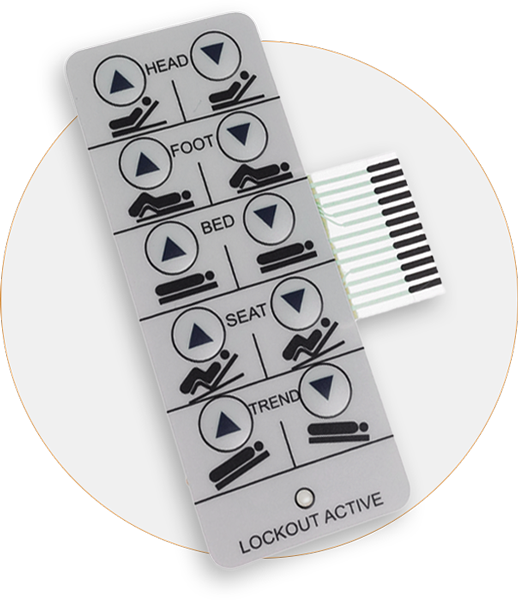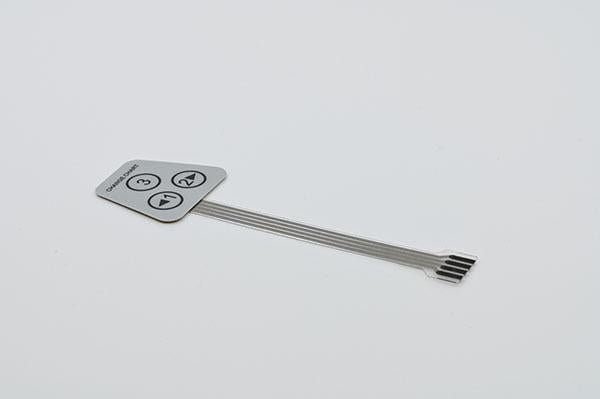Why Choosing the Right Membrane Switch Is Vital for Your Product Design
Why Choosing the Right Membrane Switch Is Vital for Your Product Design
Blog Article
Recognizing the Performance of Membrane Switches Over for Interface Devices
The functionality of membrane layer switches over stands for a substantial innovation in user interface layout, combining effectiveness with aesthetic convenience. These switches run with a multi-layered structure that converts user communications right into electric signals, enabling both small layouts and resilience against ecological variables. As sectors significantly prioritize individual experience, recognizing the nuances of membrane layer switch modern technology becomes essential. What ramifications do these innovations hold for future applications, and exactly how might they redefine customer interactions throughout various gadgets?
What Are Membrane Buttons?
Membrane layer switches are innovative user interface tools that assist in individual interaction with digital equipment. These functional elements include numerous layers, including a visuals overlay, spacer, and a printed circuit layer. The design permits a seamless integration into various electronic devices, improving both the visual and functional aspects of user interfaces.
Membrane switches are generally utilized in a vast array of applications, from home appliances to commercial machinery and medical devices. Their building generally features a slim account, making them an excellent selection for small designs. The tactile feedback provided by these buttons can be crafted to fulfill certain individual choices, guaranteeing efficient communication between the customer and the gadget.
Durability is an additional considerable advantage of membrane layer switches, as they are resistant to dirt, wetness, and chemicals, which enhances their life expectancy sought after environments. Additionally, these buttons can be customized in regards to form, size, and visuals layout, permitting branding and user-specific features. On the whole, membrane layer changes stand for a useful remedy for improving user experience in digital devices, combining performance with visual allure in an effective fashion.
Exactly How Membrane Layer Changes Job
Operating on an uncomplicated principle, membrane changes utilize a layered construction to sign up user input efficiently. Each button contains multiple layers, including a published circuit layer, a spacer layer, and a leading visuals layer, which are developed to function together seamlessly. When an individual presses the leading layer, it compresses the spacer layer, bringing the conductive aspects of the circuit layer into contact with each various other.
This call creates a shut circuit, signaling the gadget to carry out a certain function. The design enables for numerous setups, including responsive feedback, which can enhance the user experience by giving a physical feeling upon activation. The materials utilized in membrane buttons usually include flexible substrates, such as polyester or polycarbonate, which ensure longevity and resilience against wear and tear.

Trick Benefits of Membrane Layer Switches

Another considerable advantage is their density. Membrane try this out buttons are thin and light-weight, which enables producers to conserve area in their devices without giving up functionality. This function is particularly advantageous in applications where weight and quantity are crucial considerations.
Furthermore, membrane buttons are immune to dust, dampness, and chemicals, enhancing their toughness. This strength extends their life-span and lowers the requirement for constant substitutes, resulting in expense savings in time.
Furthermore, the tactile comments supplied by membrane layer switches can be enhanced to enhance customer communication. They can consist of attributes such as elevated buttons or distinct clicks, improving functionality and customer experience.
Applications Throughout Industries
Interface gadgets using membrane layer switches are widespread in a wide variety of sectors, showcasing their flexibility and functionality. Membrane Switch. In the medical market, membrane layer switches are essential to gadgets such as analysis equipment and client surveillance systems, where their durability and simplicity of cleaning are vital for maintaining hygiene requirements. Likewise, in the automotive industry, these switches are utilized in control panel controls and infotainment systems, supplying a sleek and contemporary user interface for customers.
Additionally, the customer electronic devices industry take advantage of membrane switches in appliances and handheld tools, where portable design and user-friendly interfaces boost user experience. Industrial applications also leverage membrane layer switches over for control panels in machinery and automation systems, stressing their robustness and resistance to rough settings.
In the aerospace and defense industries, membrane buttons are used in cockpit controls and equipment, where integrity and efficiency under extreme conditions are extremely important. In addition, the gaming sector significantly includes membrane buttons in controllers and gallery makers, contributing to an interesting customer experience. Generally, the flexibility of membrane switches allows their extensive use throughout countless markets, highlighting their importance in modern interface layout.
Future Patterns in Membrane Layer Switch Technology

Additionally, making use of advanced products, such as polycarbonate and directory polyester films, is anticipated to rise, supplying boosted resilience and resistance to ecological stress factors. These products add to the total durability of membrane layer switches, making them ideal for harsher commercial applications.
Furthermore, the consolidation of smart innovation, consisting of IoT connection, will certainly make it possible for membrane switches to interact with various other gadgets and systems, helping with a much more interactive user experience. This pattern aligns with the expanding demand for clever devices across different sectors, from healthcare to consumer electronics.
Lastly, customization options are anticipated to increase, allowing makers to develop bespoke services tailored to specific user demands and choices. These advancements will certainly position membrane switches as important components in the evolution of interface modern technology.
Verdict
Finally, membrane layer changes stand for a critical advancement in customer interface modern technology, using a trustworthy and flexible service for varied digital applications. Their layered building and construction assists in small layout, while attributes such as tactile feedback boost user communication. The toughness against ecological aspects further strengthens their energy across numerous markets. As advancements in product science and touch picking up innovations continue, the capability and applicability of membrane layer buttons are expected to increase, enhancing their value in modern digital tools.
Report this page